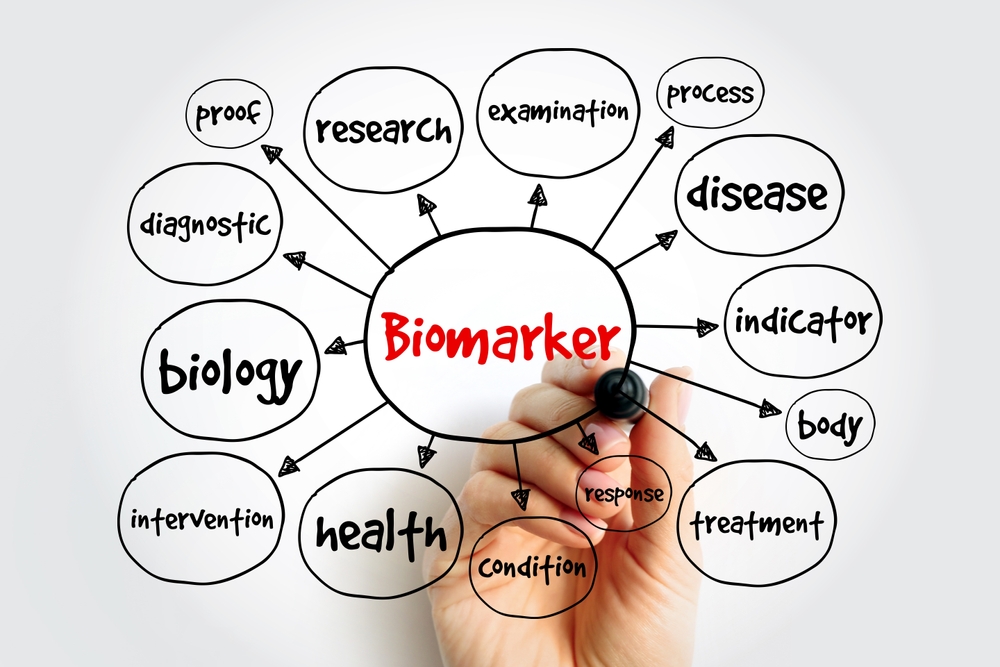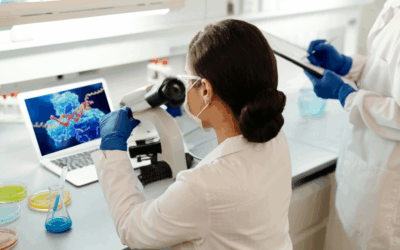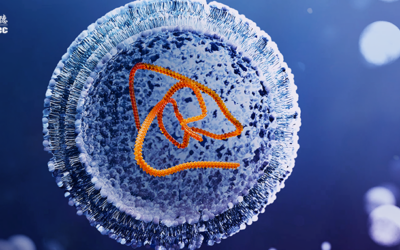Despite centuries of medical progress, simultaneously monitoring the human body’s many processes and co-occurring reactions remains difficult. In recent years, researchers have added a crucial tool to understand what’s happening—the ability to measure biomarkers.
Biomarkers are signs that tell us how the body operates. They can indicate illness, disrepair, and healing rate and are found in blood, tissues, and even the air we exhale. Because of this, they hold enormous potential for drug developers, as they can help researchers understand normal biological pathways, disease mechanisms, and how patients respond to medication.
The various biomarker categories
Each biomarker can perform a different function. Some help diagnose diseases, others predict how a patient might respond to a treatment, and another group can monitor a condition’s progress.
The Biomarkers, Endpoints, and Other Tools (BEST) Resource categorizes biomarkers into several categories. Each type of biomarker helps diagnose, manage, and treat diseases, and their wide range of uses showcases their versatility and crucial role in advancing medical care. The BEST Resource categories include:
- Diagnostic: Identifying the presence of diseases and conditions.
- Surveillance: Monitoring the status of a disease or condition over time.
- Pharmacodynamic/Response: Indicating the body’s response to a therapy.
- Predictive: Helping to predict the patient’s response to a treatment.
- Prognostic: Indicating the overall outcome of a disease, regardless of treatment.
- Safety: Establishing the potential for toxic effects of drug candidates and therapies.
- Sensitivity/Risk: Indicating how susceptible an individual is to a disease or condition.
Navigating the regulatory landscape
Regulators have recognized the potential of biomarkers and helped set a path for their future use in drug development. In a 2004 whitepaper, regulatory bodies found that biomarkers could significantly enhance the development of new medicines and urged their continued use.
Around the world, regulators have underscored the complexity of biomarkers and the challenges in method validation. In 2018, new guidance introduced a flexible approach called “fit-for-purpose” (FFP). This approach tailors to the specific needs and stages of a drug’s development path, providing essential flexibility and ensuring that the level of method validation aligns with the study’s objectives.
Regulators require comprehensive method validation for critical studies, such as those supporting new drug or biologics license applications. However, validation can be adjusted to specific needs for exploratory phases like early drug development or candidate selection. This flexibility allows researchers to focus their efforts where they are most needed.
Developing an approach to FPP
A structured approach is best for developing an in-house biomarker method validation strategy. The three levels should include:
- Level 1: Establishing a non-GLP method, which may involve methods to gather evidence for exploratory purposes. The results wouldn’t be used for a regulatory submission.
- Level 2: The method may be used for exploratory purposes. The results are submitted to regulatory authorities but not used for crucial decision-making.
- Level 3: This final level would require full validation of all parameters. Results are submitted to regulators as secondary endpoints to assess drug efficacy.
Biomarkers in real-world scenarios
The following case studies show how the practical application of the FFP approach works and how biomarkers are now vital tools in fighting disease.
Biomarker 1 : IL-23, IL-22 & IL-17A (Level 3)
Psoriasis causes rapid skin cell growth and immune cell infiltration. The IL-23, IL-17A, and IL-22 cytokines drive the inflammation that makes this chronic skin condition difficult for patients. IL-23 is particularly important as it promotes the expansion of Th17 cells, which produce inflammatory factors IL-17A and IL-22.
This methodological validation ensures accurate measurement of these cytokines, thereby supporting clinical efficacy evaluation. The validated method demonstrates consistent performance and confirms the stability of the biomarkers in samples stored at ultra-low temperatures for 12 months.
Biomarker 2: Total GLP-1 & Active GLP-1 (Level 3)
The weight loss industry has advanced rapidly in recent years. The development of pharmaceutical solutions like GLP-1 (glucagon-like peptide-1) based drugs has become a hot topic in drug research and development.
GLP-1 is secreted by intestinal cells, creating the “full” feeling we get after eating. However, the effect is only fleeting as it naturally breaks down quickly in the body. Synthetic GLP-1 drugs are resistant to degradation and have extended activity, offering new potential treatments for Type II diabetes and aiding weight management.
WuXi AppTec recently fully validated Total GLP-1 and Active GLP-1 detection in P800 plasma using the Meso Scale Discovery (MSD) platform. This is a level 3 validation and ensures the method is reliable enough for clinical sample analysis.
A final word
Biomarkers play a crucial role in drug development today, but their significance will only increase as technology progresses. To make the most of this opportunity, developers must understand the regulatory guidance and the best ways to deploy the technology. The effective use of biomarkers marks another step towards personalized, effective treatments that can save and change lives.
As a global company with operations across Asia, Europe, and North America, WuXi AppTec provides a broad portfolio of R&D and manufacturing services that enable the global pharmaceutical and life sciences industry to advance discoveries and deliver groundbreaking treatments to patients. Through its unique business models, WuXi AppTec’s integrated, end-to-end services include chemistry drug CRDMO (Contract Research, Development and Manufacturing Organization), biology discovery, preclinical testing and clinical research services, helping customers improve the productivity of advancing healthcare products through cost-effective and efficient solutions. WuXi AppTec received an AA ESG rating from MSCI for the fourth consecutive year in 2024 and its open-access platform is enabling around 6,000 customers from over 30 countries to improve the health of those in need – and to realize the vision that “every drug can be made and every disease can be treated.”


